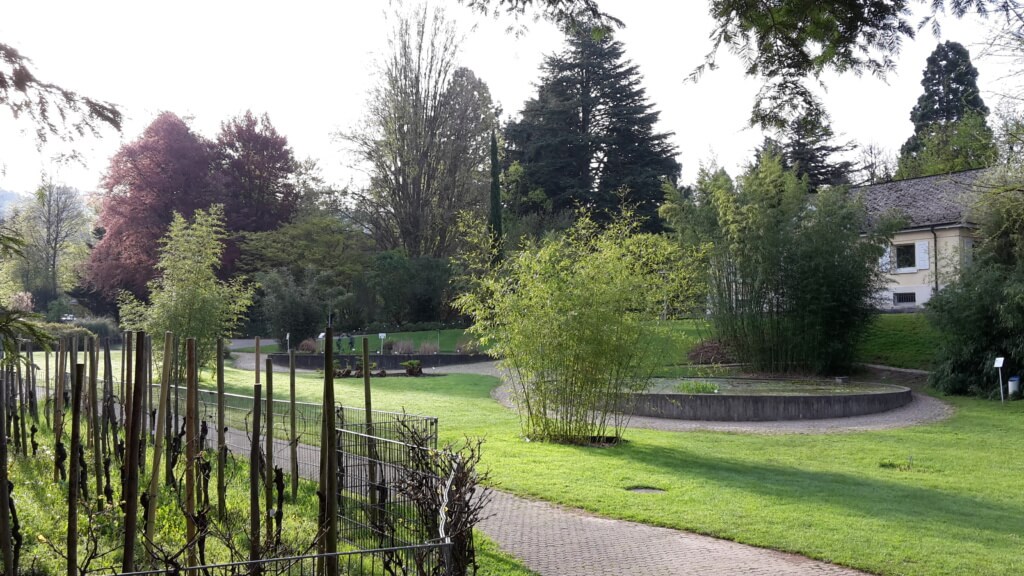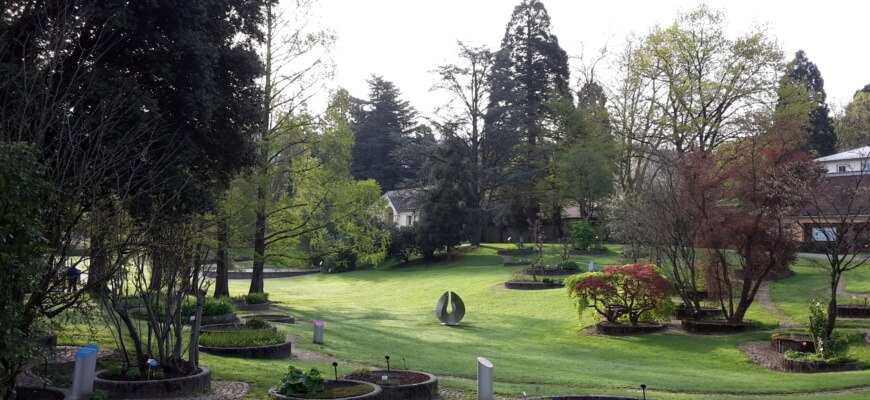Today we would like to introduce a new article format which will appear on our blog from time to time: ‚10 questions to …‘.
We are interviewing people working in the field of Biomimetics and ask them questions concerning their work, interest and opinion on their subject. We will try to choose interviewees with different backgrounds and research interests and are looking forward to collecting different views and opinions. Maybe you have a suggestion for an interviewee? Feel free to share your ideas, thoughts and opinions!
We have the pleasure to start the article series with Prof. Thomas Speck from the University of Freiburg.

Prof. Thomas Speck
What are your name, age and academic background?
My name is Thomas Speck and I am 58 years old. My original academic background is Biophysics – at the beginning I was working a bit in the field of Neurobiology and a very long time in Biomechanics with a focus on plant growth habits. Since 15 years I am working in Biomimetics which is now the main field of research of my institute (Plant Biomechanics Group Freiburg).
In which way are you dealing with the subject of Biomimetics and what are the most recent topics you are working on?
I am doing more or less everything related to structural Biomimetics. I am head of the Plant Biomechanics Group Freiburg and Director of the Botanic Garden Freiburg. I am involved quite a lot in teaching at the University – especially for Bachelor-, Master- and state examination students. In my research group we are conducting a lot of basic research contributing to biomimetic inventions but we are also closely collaborating with industrial companies.
We are currently involved in a big Collaborative Research Centre about Biomimetics in Architecture (SFB-TRR141). Therefore, we are recently dealing with topics like the optimization of damping material for earth quake prevention, ultra-lightweight architecture to minimize the usage of concrete, optimization of branched pillars or façade-shading systems. In addition to that we are also working on the theory of Biomimetics and how this field of science can actually be defined. Following my personal interests, I am currently dedicating quite a lot of thoughts to the issue of how to transfer beauty and aesthetics from biology into technology – this is especially important in the context of architecture!
How did you first learn about Biomimetics?
I knew about Biomimetics since my school time, but I always wanted to become a basic researcher. In the mid-1980th I was invited by Werner Nachtigall – one of the godfathers of Biomimetics in Germany – to give a lecture in one of his conferences which I was first skeptical about. Still, since the mid-1990th Biomimetics is the main topic of my research.
Why did you decide to work in this particular field of science?
Working in Biomimetics simply fascinates me, because I can be a student forever! I am collaborating with so many clever people – colleagues and/or friends – coming from different fields of science. I can learn my whole life long and this is really a gift, the subject of Biomimetic gives to me!
What is your one sentence definition of Biomimetics?
Biomimetics is never a copy but a reinvention of technical products inspired by nature.
What is your favorite biomimetic product and why?
This is really hard to say and the answer to that changes from time to time. I was always fascinated by self-x properties, especially self-repair – a topic which my wife, Olga Speck, is working on as a group leader in the Plant Biomechanics Group. As mentioned above I am right now particularly interested in beauty & aesthetics in Biomimetics – a newly emerging character of this subject. Biomimetics in architecture is, in my opinion, a real topic of the future – with mega cities evolving and the reduction of CO2 emission getting more and more important, Biomimetics has a high potential to contribute to modern architecture!
What makes working in the field of Biomimetics so exciting?
As I already said: the collaboration with colleagues is one of the most exciting features in Biomimetics. Besides that, I like to work from basic research in the garden – or even the jungle – all the way to product development which is possible in Biomimetics! I somehow have the feeling to be able to give something to society and that is really rewarding.
What is most challenging about Biomimetics?
There are many challenging things in Biomimetics. A superficial but major problem is that more biomimetic products have to reach the step on the market. Architecture is quite a good chance for that as most buildings are unique and we can test a lot of features on a prototype level.
Another major challenge is the issue of sustainability. In my opinion, the so-called ‘Biomimetics promise’, stating that biomimetic products are sustainable as they are inspired by nature, is wrong. We have to test every single product separately to find out if it is actually sustainable!
Really challenging in Biomimetics is that we are still having difficulties in understanding complex but fundamental natural phenomena like self-organization which is the basis for all self-x properties. Biology is fantastic in self-organizing itself – from molecule to the organism – and understanding the basic mechanics of that is really important, but very challenging!
What could be done to make Biomimetics a more acknowledged tool in technology?
Firstly, I think it is essential to bring more products on the market.
One major problem – not only of Biomimetics but science in general – is that the public is not actually aware of what we are doing. In Germany I assume that only 5% of the people know what Biomimetics is – 20% maybe think it has something to do with Biotechnology. The rest probably has no idea what we are doing! I think the society has to be educated about our research to make Biomimetics a more acknowledged field of science. Museums or Botanic and Zoological Gardens are optimal for that. For example: in the Botanic Garden Freiburg we have a ‘Biomimetic path’ where everyone can lean in an extra school environment about Biomimetics.
I think we have to show the potential of Biomimetics and how efficient the solutions of nature are in terms of materials and energy. Biomimetics offers a whole flower bouquet of diverse potentials – and this has to be demonstrated to the public, politicians and industrial partners.
… and finally: What biomimetic innovation could change the world?
As I said: to understand how nature is achieving self-organization could really change the world; especially as a basis to create intelligent material. At the moment we are creating dull materials with complicated electronic systems for intelligent applications. Nature is different! And we need material systems which are intelligent by themselves – in architecture, automobile or aerospace industry to name only a few examples. All this we are dealing with in Freiburg – especially in our new Freiburg Centre for Interactive Materials and Bionispired Technologies (FIT). I am not sure if we will achieve solutions which are as good as we hope in my active business life but I hope to live long enough to see some of them!

Botanic Garden Freiburg in April 2016
We kindly thank Thomas Speck for this inspiring interview!




Great idea to include interviews.
I am keenly interested in professor’s Speck’s comments regarding the idea of beauty and aesthetics in Biomimetic design as it offers another perspective that is not often discussed. Would it be possible to expand on this topic in another blog?
Hello Dixie Hudson,
thanks for your comment! We are happy that you like our new article category.
We will discuss your topic suggestion. Maybe someone of us will pick it for the next time when we collect new ideas.
Hi Dixie,
just read that you are interested in the question about beauty & aesthetics in biomimetics.
You may find some ideas under:
T. Speck (2015): Approaches to Bio-inspiration in Novel Architecture. – In: B. Imhof & P. Gruber (eds.), Built to Grow – Blending architecture and biology, 145 – 149. Birkhäuser Verlag, Basel.
Best wishes Thomas